Forging Bevel Gear Lubrication System Efficiency Evaluation Tools
Basic Definitions and Product Features
Forging bevel gears are a type of bevel gears that are manufactured through the forging process. Forging involves shaping metal through the application of localized compressive forces, typically using a die or hammer. In the case of bevel gears, the forging process is used to form the gear teeth and create the desired gear geometry.
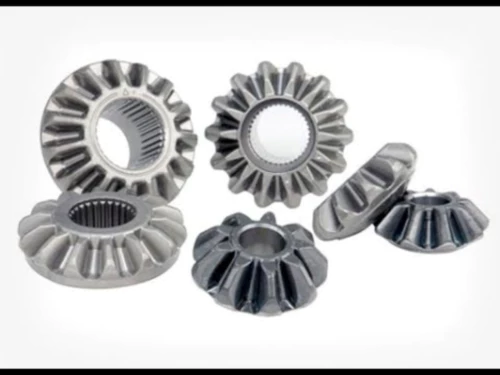
Advantages of Forging Bevel Gears
1. High Strength
Forging bevel gears exhibit exceptional strength due to the nature of the forging process. The compressive forces applied during forging align the metal's grain structure, resulting in improved mechanical properties and increased load-carrying capacity.
2. Improved Fatigue Resistance
Due to the uniformity of the metal's grain structure achieved through forging, bevel gears have enhanced fatigue resistance. This allows them to withstand repeated loading and ensure reliable performance over an extended period.
3. Precise Gear Tooth Geometry
The forging process allows for the precise control of gear tooth geometry. This ensures accurate and smooth engagement between the bevel gears, reducing noise, vibration, and wear while maximizing power transmission efficiency.
4. Cost-Effectiveness
Forging bevel gears offer cost-effectiveness in terms of production and performance. The high material utilization and the ability to create complex gear geometries through forging result in reduced material waste and improved overall efficiency.
5. Versatility in Material Selection
Forging bevel gears can be manufactured from various materials, including carbon steel, alloy steel, stainless steel, and non-ferrous alloys. This versatility enables the selection of materials based on specific application requirements, ensuring optimal performance and durability.
6. Enhanced Structural Integrity
The forging process enhances the structural integrity of bevel gears by eliminating internal defects and improving the metal's density and strength. This ensures reliable operation even under high loads and severe operating conditions.
7. Tailored Mechanical Properties
Through controlled heating and cooling processes during forging, the mechanical properties of bevel gears can be tailored to meet specific application requirements. This allows for customization in terms of hardness, toughness, and other mechanical characteristics.
8. Reduced Lead Time
Forging bevel gears offer shorter lead times compared to other manufacturing methods. The streamlined production process of forging, combined with the elimination of additional machining operations, reduces production cycle times and accelerates product delivery.
9. Environmental Sustainability
Forging is a sustainable manufacturing process with minimal material waste. The high material utilization and energy efficiency of forging contribute to reducing the environmental impact associated with bevel gear production.
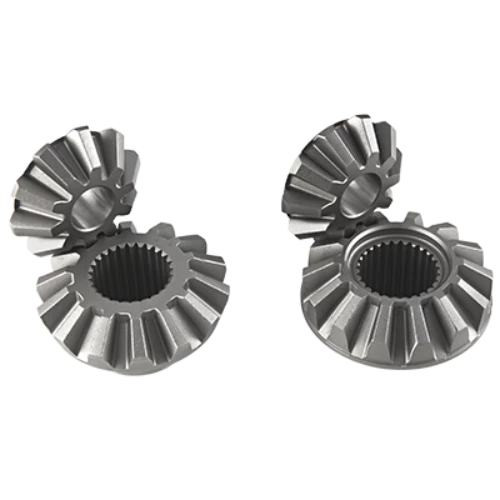
Working Principles of Forging Bevel Gears
Forging bevel gears operate based on the fundamental principles of gear mechanisms. They consist of two intersecting shafts, each with a conically shaped gear (bevel gear) mounted on it. The teeth of the bevel gears are designed to have a specific tooth profile, such as straight, spiral, or hypoid, depending on the application requirements.
When the input shaft rotates, the engagement of the teeth of the bevel gears causes a transfer of rotational motion and torque to the output shaft. The contact between the mating teeth ensures power transmission while maintaining proper alignment and smooth operation.
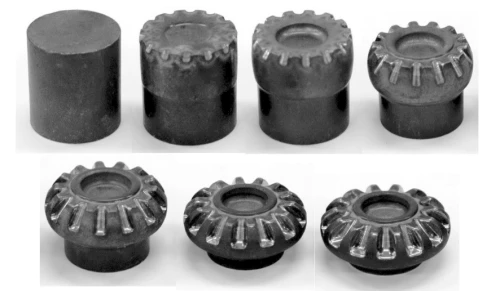
Applications of Forging Bevel Gears
1. Automotive Industry
Forging bevel gears find extensive use in the automotive industry, particularly in the transmission systems of vehicles. They offer reliable and efficient power transmission, contributing to the overall performance and durability of automobiles.
2. Industrial Machinery
Forging bevel gears are widely employed in various industrial machinery applications, including machine tools, conveyors, pumps, and compressors. They ensure accurate power transmission and smooth operation in demanding industrial environments.
3. Aerospace and Defense
The aerospace and defense sectors utilize forging bevel gears in applications such as aircraft engines, helicopters, and military vehicles. The high strength, precision, and reliability of these gears make them suitable for critical aerospace and defense systems.
4. Renewable Energy
Forging bevel gears play a vital role in renewable energy systems, such as wind turbines and solar tracking mechanisms. They enable efficient power transmission and ensure optimal energy conversion in renewable energy generation.
5. Marine and Shipbuilding
In the marine and shipbuilding industry, forging bevel gears are utilized in propulsion systems, steering mechanisms, and other critical applications. Their durability and resistance to harsh marine conditions make them ideal for maritime operations.
6. Agricultural Machinery
Agricultural machinery, including tractors, combines, and harvesters, relies on forging bevel gears for efficient power transmission and reliable operation. These gears withstand the demanding conditions of agricultural applications.
7. Power Generation
Power generation facilities, such as hydroelectric power plants and thermal power stations, utilize forging bevel gears in turbines, generators, and other rotating equipment. The high load-carrying capacity and precision of these gears ensure efficient power generation.
8. Robotics and Automation
Forging bevel gears are essential components in robotics and automation systems. They enable precise motion control and power transmission in robotic arms, automated machinery, and various other automated applications.
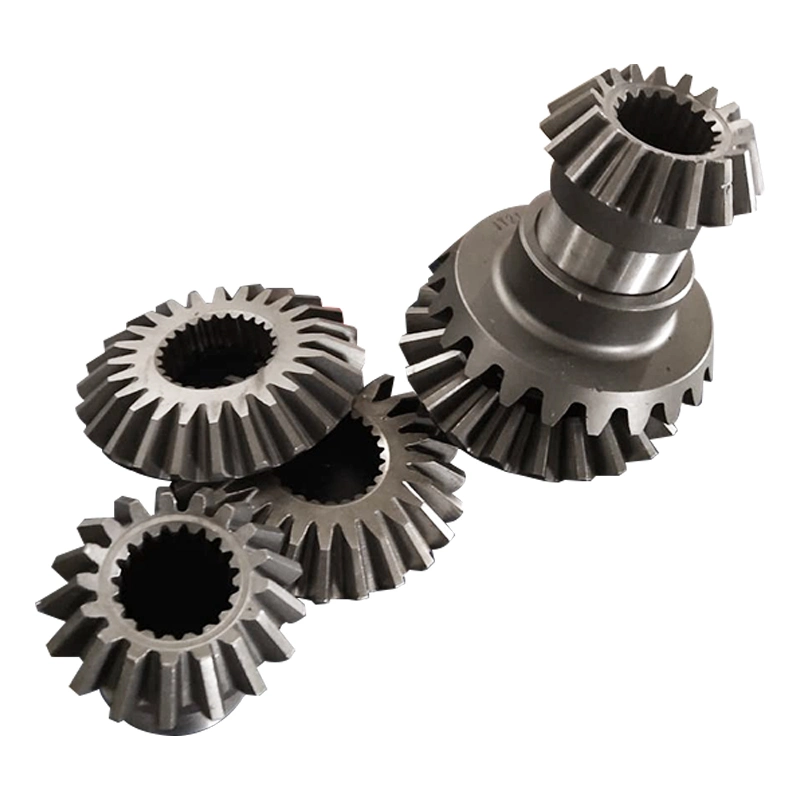
Installation and Maintenance of Forging Bevel Gears
Installation:
1. Proper Alignment
During installation, it is crucial to ensure accurate alignment between the mating bevel gears. Proper alignment guarantees smooth engagement, reduces wear, and minimizes noise and vibration.
2. Lubrication
Bevel gears require adequate lubrication to reduce friction, wear, and heat generation. Appropriate lubricants should be selected based on application requirements and operating conditions.
3. Mounting Bolts
The mounting bolts used to secure the bevel gears should be tightened according to the manufacturer's specifications. Proper bolt tightening ensures secure and reliable gear installation.
4. Inspection
Before putting the system into operation, a thorough inspection should be carried out to verify proper installation, alignment, and lubrication. Any issues or abnormalities should be addressed before starting the equipment.
Maintenance:
1. Lubrication
Regular lubrication is essential to maintain the optimal performance and lifespan of forging bevel gears. Lubricants should be periodically replenished or replaced as recommended by the manufacturer.
2. Cleaning
Cleanliness is crucial for the proper functioning of bevel gears. Regular cleaning helps remove debris, dirt, and contaminants that can affect gear performance and lead to premature wear or failure.
3. Inspection
Periodic inspections should be conducted to assess the condition of the bevel gears. This includes checking for signs of wear, damage, or misalignment. Any issues identified should be addressed promptly.
4. Replacements
If any components of the bevel gears are found to be damaged or worn beyond acceptable limits during inspections, they should be replaced with suitable replacements to maintain the gear system's performance and reliability.
5. Gearbox Maintenance
If the bevel gears are part of a gearbox system, regular maintenance of the entire gearbox should be performed according to the manufacturer's recommendations. This may include inspections, lubricant changes, and other maintenance tasks.
6. Load Monitoring
Regular monitoring of the load conditions on the bevel gears is important to ensure they operate within the specified limits. Excessive loads can lead to premature wear, failure, or reduced efficiency.
7. Training and Expertise
Proper training and expertise in the maintenance of bevel gears are crucial for ensuring effective maintenance practices. Personnel responsible for gear maintenance should receive adequate training and stay updated with the latest maintenance techniques.
8. Record-Keeping
Maintaining accurate records of maintenance activities, including lubrication schedules, inspections, and replacements, helps track the gear system's performance and identify any recurring issues or trends.
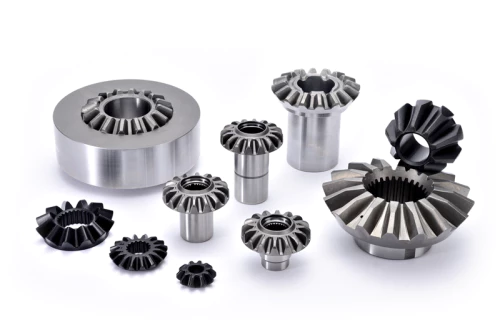
Selecting the Right Forging Bevel Gear
1. Application Requirements
The selection of forging bevel gears should align with the specific application requirements, including torque capacity, operating speed, and environmental conditions.
2. Design and Specifications
The design and specifications of the bevel gears should match the intended application. Factors such as gear ratio, tooth profile, and tooth geometry should be considered to achieve optimal performance.
3. Material Selection
The choice of material for forging bevel gears should be based on factors such as load requirements, operating conditions, and compatibility with other system components. Material properties, such as strength, hardness, and corrosion resistance, should be evaluated.
4. Quality and Reliability
When selecting forging bevel gears, it is essential to consider the quality and reliability of the manufacturer or supplier. Ensuring that the gears meet relevant industry standards and certifications is crucial for long-term performance and reliability.
5. Load-Carrying Capacity
The load-carrying capacity of the bevel gears should be assessed to ensure it can handle the expected operating loads. Factors such as gear size, tooth profile, and material properties influence the load-carrying capacity.
6. Efficiency and Performance
The efficiency and performance characteristics of the bevel gears, such as power transmission efficiency, noise level, and vibration, should be evaluated to ensure they align with the system requirements.
7. Customization and Adaptability
Consideration should be given to the ability of the manufacturer or supplier to customize the bevel gears based on specific application requirements. This allows for better integration into the overall system and enhances performance.
8. Cost Considerations
While cost should not be the sole determining factor, it is important to consider the cost implications of selecting forging bevel gears. A balance between quality, performance, and cost-effectiveness should be achieved.
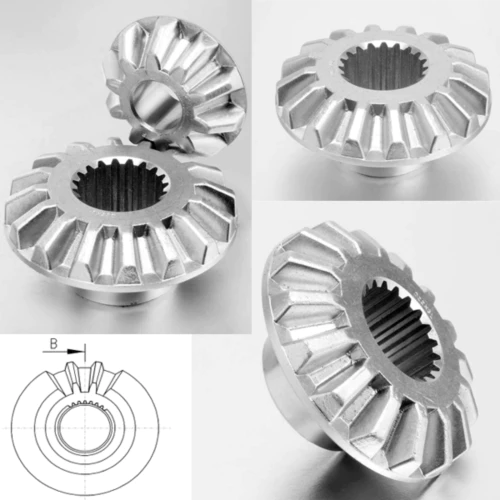
About Shaoxing Chaoli
Shaoxing Chaoli is a professional manufacturer of gears in China. Our products are exported to different countries such as Spain, the Netherlands, the United States, South Korea, Turkey, and Russia. We are committed to helping customers develop new products and solve technical and quality problems. Our focus is on delivering high-quality products, fair prices, and perfect services.
In short, we adhere to the principles of quality first, timely delivery, and credit first